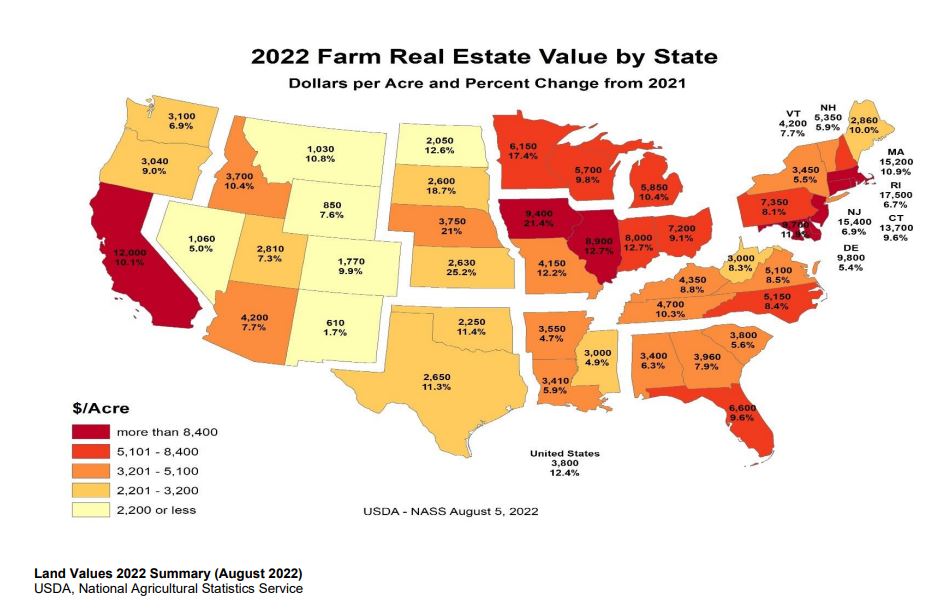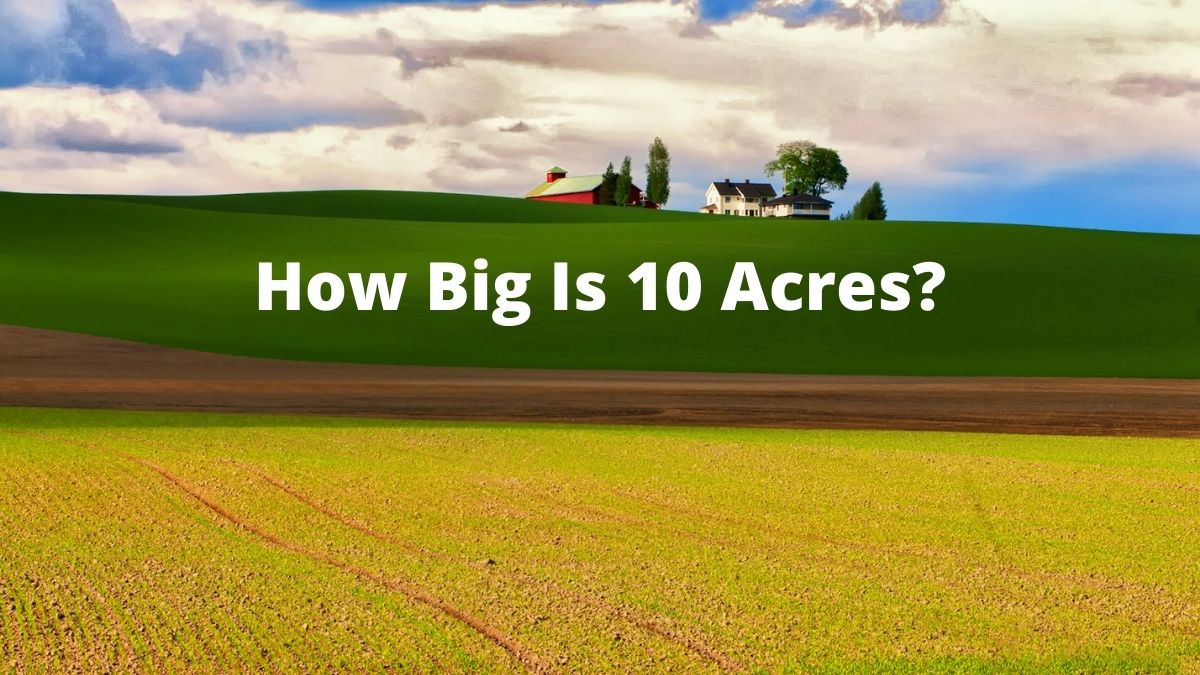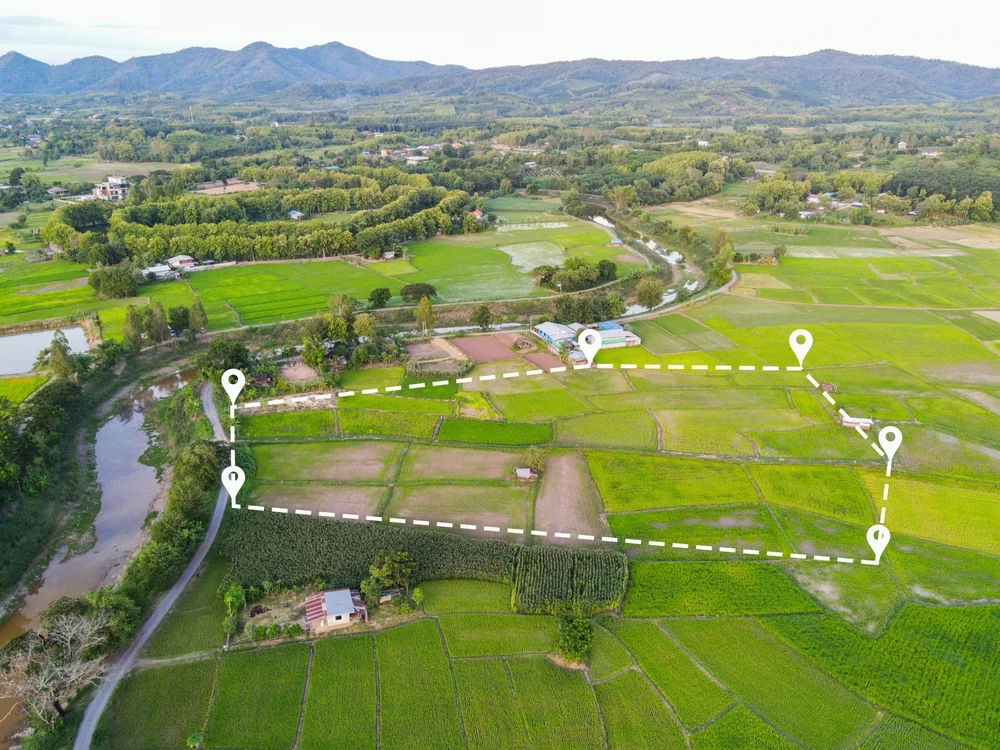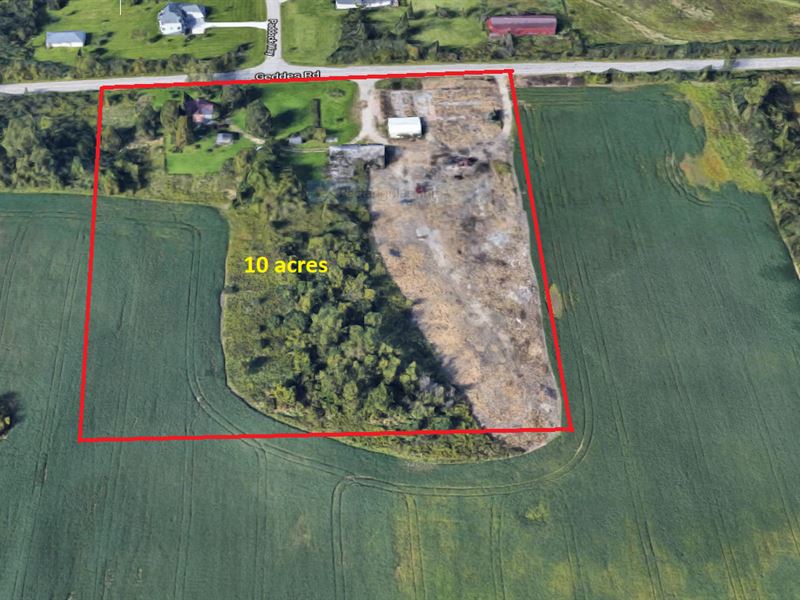Understanding the Factors that Influence Land Value
When it comes to determining the value of a ten-acre land parcel, several factors come into play. The worth of the land is not solely determined by its size, but rather by a combination of factors that affect its potential uses, accessibility, and overall desirability. Understanding these factors is crucial in determining how much ten acres of land is worth.
Location is one of the most significant factors that influence land value. Proximity to urban areas, natural resources, and transportation infrastructure can significantly impact the land’s worth. For instance, a ten-acre parcel located near a bustling city may be more valuable than a similar parcel located in a remote area. This is because the former offers greater access to amenities, services, and job opportunities, making it more attractive to potential buyers.
Zoning regulations also play a crucial role in determining land value. Different types of zoning regulations can affect the land’s potential uses, and subsequently, its value. For example, a parcel zoned for agricultural use may be less valuable than a similar parcel zoned for residential or commercial use. This is because the former has limited potential uses, whereas the latter offers greater flexibility and opportunities for development.
Soil quality is another factor that can impact land value. The type and quality of soil can affect the land’s potential uses, particularly for agricultural purposes. For instance, a parcel with fertile soil may be more valuable than a similar parcel with poor soil quality. This is because the former offers greater potential for crop production and other agricultural activities.
Access to amenities is also an essential factor in determining land value. The availability of amenities such as roads, utilities, and services can significantly impact the land’s worth. For instance, a parcel with easy access to roads and utilities may be more valuable than a similar parcel without these amenities. This is because the former offers greater convenience and accessibility, making it more attractive to potential buyers.
By understanding these factors, landowners and potential buyers can gain a better appreciation of how much ten acres of land is worth. Whether you’re looking to buy, sell, or develop a ten-acre parcel, it’s essential to consider these factors to determine the land’s true value.
How to Determine the Value of Ten Acres of Land
Determining the value of a ten-acre land parcel can be a complex process, but it can be broken down into several key steps. Whether you’re looking to buy, sell, or develop a ten-acre parcel, understanding how to determine its value is crucial in making informed decisions. So, how much is ten acres of land worth? The answer lies in a combination of research, analysis, and expert advice.
Step 1: Research Comparable Sales
One of the most effective ways to determine the value of a ten-acre land parcel is to research comparable sales in the same area. This involves identifying recent sales of similar properties and analyzing their sale prices, acreage, and other relevant factors. By comparing these sales, you can gain a better understanding of the market value of your ten-acre parcel.
Step 2: Assess the Land’s Potential Uses
The intended use of the land can significantly impact its value. For example, a ten-acre parcel zoned for residential use may be more valuable than a similar parcel zoned for agricultural use. Assessing the land’s potential uses involves evaluating its zoning, topography, and other factors that may affect its development potential.
Step 3: Consult with a Real Estate Expert
Consulting with a real estate expert can provide valuable insights into the value of your ten-acre land parcel. An expert can help you navigate the process of determining land value, identify potential issues or opportunities, and provide guidance on how to maximize the land’s worth.
Step 4: Analyze Market Trends and Conditions
Understanding market trends and conditions is essential in determining the value of a ten-acre land parcel. This involves analyzing factors such as supply and demand, economic conditions, and demographic trends. By staying informed about market conditions, you can make more informed decisions about your land investment.
Step 5: Consider Additional Factors
In addition to the above steps, there are several other factors to consider when determining the value of a ten-acre land parcel. These may include the land’s proximity to amenities, its environmental features, and its potential for development. By taking a comprehensive approach to determining land value, you can gain a more accurate understanding of how much your ten-acre parcel is worth.
The Role of Location in Determining Land Value
Location is one of the most critical factors in determining the value of a ten-acre land parcel. The proximity of the land to urban areas, natural resources, and transportation infrastructure can significantly impact its worth. Understanding how location affects land value is essential in determining how much ten acres of land is worth.
Proximity to Urban Areas
The closer a ten-acre land parcel is to an urban area, the more valuable it is likely to be. This is because urban areas typically offer greater access to amenities, services, and job opportunities, making the land more attractive to potential buyers. For example, a ten-acre parcel located near a city center may be more valuable than a similar parcel located on the outskirts of town.
Access to Natural Resources
Land parcels with access to natural resources such as water, timber, or minerals can be more valuable than those without. This is because these resources can provide additional income streams or uses for the land, increasing its overall value. For instance, a ten-acre parcel with a stream running through it may be more valuable than a similar parcel without access to water.
Transportation Infrastructure
The availability of transportation infrastructure such as roads, highways, and airports can also impact land value. Land parcels with easy access to transportation infrastructure are typically more valuable than those without, as they offer greater convenience and accessibility. For example, a ten-acre parcel located near a major highway may be more valuable than a similar parcel located in a remote area.
Other Location-Based Factors
In addition to the above factors, there are several other location-based factors that can impact land value. These may include the land’s proximity to schools, shopping centers, and other amenities, as well as its environmental features such as scenic views or wildlife habitats. By considering these factors, you can gain a better understanding of how location affects the value of a ten-acre land parcel.
Ultimately, the value of a ten-acre land parcel is heavily influenced by its location. By understanding how location affects land value, you can make more informed decisions about your land investment and determine how much ten acres of land is worth.
Assessing the Potential Uses of Ten Acres of Land
The potential uses of a ten-acre land parcel can significantly impact its value. Understanding the various uses of the land is essential in determining how much ten acres of land is worth. In this section, we will explore the different potential uses of a ten-acre land parcel, including agricultural, residential, commercial, and recreational uses.
Agricultural Uses
A ten-acre land parcel can be used for various agricultural purposes, such as farming, ranching, or orcharding. The value of the land will depend on the type of agricultural use, the quality of the soil, and the availability of water and other resources. For example, a ten-acre parcel with fertile soil and access to irrigation may be more valuable than a similar parcel with poor soil quality.
Residential Uses
A ten-acre land parcel can also be used for residential purposes, such as building a single-family home or a subdivision. The value of the land will depend on the location, zoning regulations, and the availability of amenities such as schools, shopping centers, and transportation infrastructure. For instance, a ten-acre parcel located in a desirable school district may be more valuable than a similar parcel located in a less desirable area.
Commercial Uses
A ten-acre land parcel can be used for various commercial purposes, such as building a retail center, office park, or industrial facility. The value of the land will depend on the location, zoning regulations, and the availability of amenities such as transportation infrastructure and utilities. For example, a ten-acre parcel located near a major highway may be more valuable than a similar parcel located in a remote area.
Recreational Uses
A ten-acre land parcel can also be used for recreational purposes, such as building a park, campground, or resort. The value of the land will depend on the location, zoning regulations, and the availability of amenities such as scenic views, water features, and recreational facilities. For instance, a ten-acre parcel located near a lake or mountain may be more valuable than a similar parcel located in a less desirable area.
Alternative Uses
In addition to the above uses, a ten-acre land parcel can also be used for alternative purposes, such as building a solar farm, wind farm, or other types of renewable energy facilities. The value of the land will depend on the location, zoning regulations, and the availability of resources such as sunlight, wind, and water.
By understanding the various potential uses of a ten-acre land parcel, you can gain a better appreciation of its value and make more informed decisions about your land investment.
The Impact of Zoning Regulations on Land Value
Zoning regulations can have a significant impact on the value of a ten-acre land parcel. Zoning regulations determine the permitted uses of the land, and can affect the land’s potential for development, its value, and its overall worth. Understanding how zoning regulations impact land value is essential in determining how much ten acres of land is worth.
Types of Zoning Regulations
There are several types of zoning regulations that can impact land value, including:
Residential zoning: This type of zoning regulates the use of land for residential purposes, such as single-family homes, apartments, and condominiums.
Commercial zoning: This type of zoning regulates the use of land for commercial purposes, such as office buildings, retail stores, and restaurants.
Industrial zoning: This type of zoning regulates the use of land for industrial purposes, such as manufacturing, warehousing, and distribution.
Agricultural zoning: This type of zoning regulates the use of land for agricultural purposes, such as farming, ranching, and orcharding.
Recreational zoning: This type of zoning regulates the use of land for recreational purposes, such as parks, golf courses, and resorts.
Impact of Zoning Regulations on Land Value
Zoning regulations can impact land value in several ways, including:
Restricting the use of the land: Zoning regulations can limit the use of the land, which can impact its value. For example, a ten-acre parcel zoned for residential use may be less valuable than a similar parcel zoned for commercial use.
Affecting the land’s potential for development: Zoning regulations can impact the land’s potential for development, which can impact its value. For example, a ten-acre parcel zoned for industrial use may be more valuable than a similar parcel zoned for agricultural use.
Influencing the land’s value: Zoning regulations can influence the land’s value by affecting its potential uses, its development potential, and its overall worth. For example, a ten-acre parcel zoned for recreational use may be more valuable than a similar parcel zoned for residential use.
By understanding how zoning regulations impact land value, you can gain a better appreciation of the factors that affect the value of a ten-acre land parcel and make more informed decisions about your land investment.
How to Research Comparable Sales to Determine Land Value
Researching comparable sales is a crucial step in determining the value of a ten-acre land parcel. By analyzing recent sales of similar properties in the same area, you can gain a better understanding of the market value of your land. Here are some tips on how to research comparable sales to determine land value:
Identify Similar Properties
To research comparable sales, you need to identify properties that are similar to yours in terms of location, size, and use. Look for properties that are located in the same area, have a similar size and shape, and are used for the same purpose. For example, if you’re looking to determine the value of a ten-acre agricultural land parcel, look for recent sales of similar agricultural properties in the same area.
Use Online Resources
There are several online resources that can help you research comparable sales, including:
County assessor’s office: The county assessor’s office can provide you with information on recent sales of properties in the area, including the sale price, property size, and use.
Real estate websites: Websites like Zillow, Redfin, and Realtor.com can provide you with information on recent sales of properties in the area, including the sale price, property size, and use.
Local real estate agents: Local real estate agents can provide you with information on recent sales of properties in the area, including the sale price, property size, and use.
Analyze the Data
Once you have identified similar properties and gathered data on recent sales, you need to analyze the data to determine the value of your land. Consider factors such as:
Sale price: The sale price of the comparable properties can give you an idea of the market value of your land.
Property size: The size of the comparable properties can affect their value, so make sure to adjust for differences in size.
Use: The use of the comparable properties can affect their value, so make sure to adjust for differences in use.
Location: The location of the comparable properties can affect their value, so make sure to adjust for differences in location.
By researching comparable sales and analyzing the data, you can gain a better understanding of the market value of your ten-acre land parcel and determine how much it is worth.
Consulting with a Real Estate Expert to Determine Land Value
Consulting with a real estate expert can be a valuable step in determining the value of a ten-acre land parcel. A real estate expert can provide valuable insights and help navigate the process of determining land value. Here are some benefits of consulting with a real estate expert:
Expert Knowledge
A real estate expert has extensive knowledge of the local market and can provide valuable insights into the factors that affect land value. They can help you understand the impact of location, zoning regulations, soil quality, and access to amenities on the value of your land.
Objective Analysis
A real estate expert can provide an objective analysis of your land’s value, unbiased by personal opinions or emotions. They can help you identify the strengths and weaknesses of your land and provide a realistic assessment of its value.
Access to Market Data
A real estate expert has access to market data and can provide you with information on recent sales of similar properties in the area. This data can help you determine the value of your land and make informed decisions about its use and development.
Networking Opportunities
A real estate expert has a network of contacts in the industry and can provide you with opportunities to connect with potential buyers, sellers, and developers. This can help you find the right buyer for your land or identify potential development opportunities.
How to Find a Real Estate Expert
There are several ways to find a real estate expert, including:
Online Search
You can search online for real estate experts in your area. Look for experts who specialize in land sales and development.
Referrals
Ask for referrals from friends, family, or colleagues who have worked with a real estate expert in the past.
Professional Associations
Look for real estate experts who are members of professional associations, such as the National Association of Realtors or the Appraisal Institute.
By consulting with a real estate expert, you can gain a better understanding of the value of your ten-acre land parcel and make informed decisions about its use and development.
Maximizing the Value of Ten Acres of Land
Maximizing the value of a ten-acre land parcel requires careful planning and consideration of various factors. Here are some tips on how to maximize the value of your land:
Improve the Land’s Amenities
Improving the land’s amenities can increase its value and make it more attractive to potential buyers. Consider adding features such as:
Roads and infrastructure: Building roads and infrastructure can improve access to the land and make it more attractive to developers.
Utilities: Installing utilities such as water, electricity, and sewage can make the land more attractive to residential and commercial developers.
Recreational facilities: Building recreational facilities such as parks, trails, and lakes can increase the land’s value and make it more attractive to residential and recreational buyers.
Subdivide the Property
Subdividing the property can increase its value by creating multiple parcels of land that can be sold separately. Consider subdividing the property into smaller parcels that can be sold to different buyers.
Explore Alternative Uses
Exploring alternative uses for the land can increase its value and make it more attractive to potential buyers. Consider alternative uses such as:
Agricultural use: If the land is suitable for agricultural use, consider planting crops or raising livestock to increase its value.
Conservation use: If the land has conservation value, consider partnering with a conservation organization to protect the land and increase its value.
Recreational use: If the land has recreational value, consider building recreational facilities such as parks, trails, and lakes to increase its value.
By improving the land’s amenities, subdividing the property, and exploring alternative uses, you can maximize the value of your ten-acre land parcel and increase its worth over time.
Remember, the value of land is determined by various factors, including location, zoning regulations, soil quality, and access to amenities. By understanding these factors and taking steps to maximize the value of your land, you can increase its worth and make it more attractive to potential buyers.







